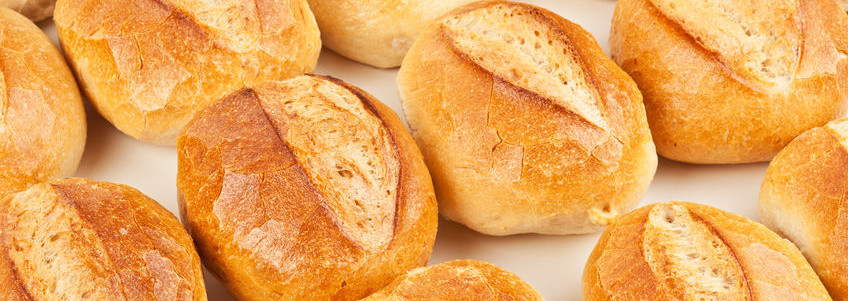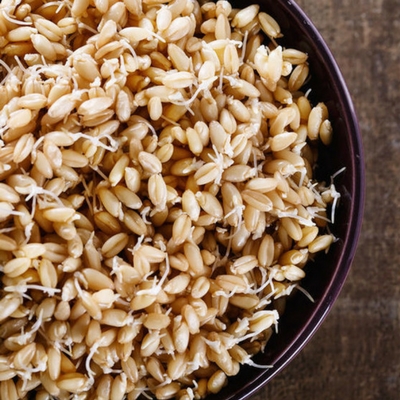
While bread remains a cultural cornerstone and staple food, its manufacturing process has seen tremendous change, as large-scale business models and increased demand require the industry to adapt to new terrain. Nowadays, food science has contributed to significant improvements in the way we bake bread in industrial settings, allowing businesses to extend shelf life without compromising on quality.
Extending the shelf life of a product ensures it is safe and enjoyable to consume for a longer period. Extended shelf life reduces the cost of the product and the potential for wasted food, and it allows products to retain their quality for longer, which increases customer satisfaction.
Why extend shelf life?
Bread that goes beyond its shelf life becomes firm, dry, less tasty and susceptible to grow mold and rot. Beyond the obvious dangers of eating rotting foods, bread is usually discarded if it becomes dry and hard. Extending its shelf life guarantees the quality of the product days (or sometimes weeks) after it was baked, ensuring that relatively lengthy transport and storage does not impede the customer from enjoying the product.
Bread usually goes bad due to two main factors:
- Microbial spoilage: which generally occurs during the packaging or cooling stages after baking. Mold starts growing due to incorrect practices or a lack of preserving agents.
- Physical spoilage (when bread goes stale or dry): which can be categorized into crust staling and crumb staling. When the crust goes stale, it is usually because the moisture from the crumb transferred to it. When the crumb goes stale, it usually means that starch became crystallized.
Here are some ways that the science of shelf life helps to avoid these issues.
Packaging

Packaging is often overlooked because bread is consumed relatively fast. However, incorrect packaging can create the perfect conditions for mold to grow. For example, when bread is packaged without allowing it enough time to cool down, a humid environment develops inside the package. High humidity inside the package encourages mold growth.
Packaging technologies, such as Modified Atmosphere Packaging (MAP), allow for extended shelf life. While oxygen is essential to life, it also speeds up the spoilage of foods by increasing the rate of growth of bacteria. MAP helps food businesses, such as the bread industry, extend the life of their products by lowering the amount of oxygen in the package by replacing it with other gases, such as carbon dioxide and nitrogen. Some businesses use packaging foils with selective gas barriers, which reduce moisture and oxygen transmission.
Moisture and Water Activity

The presence of moisture can dramatically affect shelf life. Microbial spoilage is more common in high-moisture types of bread. Bacteria usually require a high-moisture environment to grow. By utilizing moisture-reducing solutions and products, the baking industry manages to keep the same quality of product without risking high levels of water activity (aw).
Water activity is usually reduced by adding sugary elements, such as sugar, honey or, in some cases, glycerol. Enzymes such as cellulase can also be used when dealing with high-fiber breads. Cellulase helps break down water-insoluble cell walls, thus allowing bakers to use less water when creating the dough. This yields a drier bread, which increases shelf life by reducing the aw level.
Emulsifiers

Emulsifiers have been used in the food industry for almost a hundred years. Essentially, they prevent the separation of oils from water to ensure the stability of a product. Many food products, including chocolate and ice cream, use emulsifiers, such as lecithin and polysorbates, to prevent oils from separating from water by acting as binding agents. This process is also called crumb softening because it deaccelerates the rate of crumb staling by producing a softer (broken down) crumb.
Emulsifying agents are also used for dough conditioning. By interacting with gluten, emulsifiers allow bakers to achieve a more malleable dough with better texture. This is called dough strengthening because it creates stronger protein networks.
Enzymes

Finally, enzymes provide a massive contribution to extending shelf life. Enzymes are proteins that act as catalysts. Catalysts speed up the rate of reaction of certain processes. For example, enzymes in our gut help us speed up the process of obtaining nutrients from the food we eat.
Similarly, specific enzymes are used in the baking industry to enable specific breakdown processes. One can easily think of making bread as a long extension of chemical breakdowns. Yeast is full of enzymes that speed up the rate of reaction which breaks down the starch found in flour to produce sugar.
Amylase is one of the most commonly used enzymes in baking, and it is specifically used to improve the quality of flour. Amylase enables a higher yield of carbon dioxide which in turn increases the volume of the final baked product. Other enzymes are used during mixing and proofing to improve how long the crumb can stay soft and tasty.
The industry welcomes the use of enzymes in shelf life science due to several contributing factors:
- Enzyme preparations are easy and cheap to obtain.
- They dramatically improve shelf life.
- The “dry” nature of their formulations makes them easy to use.
- They can be used in conjunction with other additives to improve texture and flour quality.
- Enzymes are safe to use and provide an opportunity for “clean labeling.”
- They deactivate in the high-heat conditions of the baking process and, once denatured, they don’t have to be added to the label.
Shelf life conclusions
While breadmaking can be considered an art form, it also comes close to being a scientific pursuit. With the help of scientific research and innovation, the industry of breadmaking has dramatically increased its capacity for producing reliable and long-lasting quality.
By using correct packaging, carrying out appropriate packaging procedures, controlling moisture and utilizing emulsifiers and enzymes, bakers around the world can keep bread soft, tasty and longer lasting. By enabling this, food science helps lower bread costs while improving quality. In such a staple food for many communities, these improvements are a tremendously important contribution.

